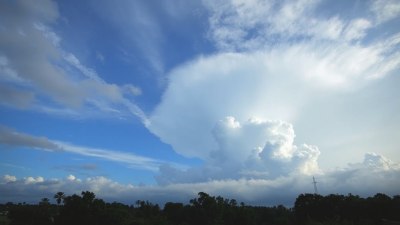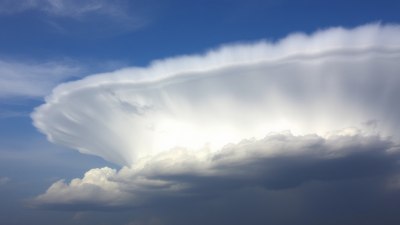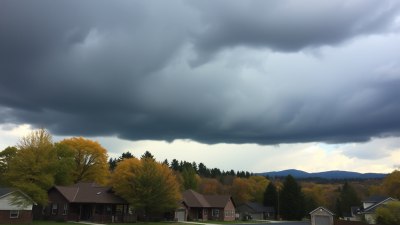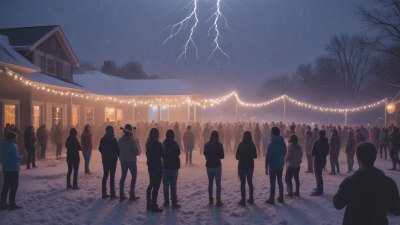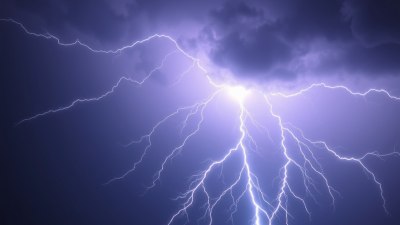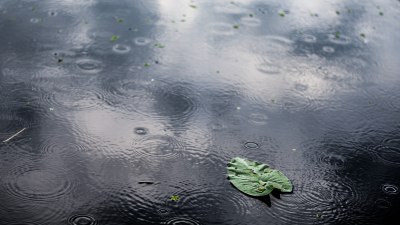What Happens to a Lightning Bolt After It Strikes the Ground
Explore the effects of lightning strikes on the ground and the environment, and the phenomena that follow after impact.
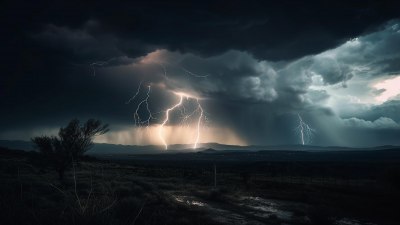
Lightning is one of nature's most powerful phenomena, capable of causing injury, damage, and even igniting fires. When a lightning bolt strikes, it creates a series of events that are both fascinating and complex. Understanding what happens after a lightning bolt strikes the ground is crucial for comprehending the broader effects of this natural occurrence.
The Nature of Lightning
Before diving into the aftermath of a lightning strike, it's important to understand the nature of lightning itself. Lightning occurs due to the buildup of electrical charges in storm clouds. This discharge of electricity can travel from the clouds to the ground in a single bolt, reaching temperatures of around 30,000 Kelvin (53,540 degrees Fahrenheit). The immense heat causes the surrounding air to rapidly expand, creating the sound wave we hear as thunder.
Immediate Effects of a Strike
When lightning strikes the ground, several immediate effects take place. First, the intense heat can vaporize water in the soil and cause a rapid expansion of the surrounding material. This can lead to the creation of small craters or depressions, especially in sandy or soft soils. Furthermore, the high voltage of a lightning strike can cause electrical surges in nearby trees and plants. This can lead to significant damage or even combustion, as the moisture in the vegetation heats up and ignites.
Soil Ionization
Soil ionization is another phenomenon that occurs following a lightning strike. The immense energy from the bolt ionizes the soil particles, creating conductive pathways. This can affect the soil’s pH and chemical composition. Though this is a temporary change, it can have lasting ecological effects on the surrounding vegetation and micro-organisms. It can also lead to increased nutrient availability in the soil, promoting growth in certain plants immediately after a strike.
Shockwaves and Craters
The shockwave produced by a lightning bolt can also lead to physical changes in the ground. If the strike is powerful enough, it can create small craters. These craters, though typically shallow, can lead to the formation of unique ecosystems for microorganisms and plants that thrive in disturbed soil. Moreover, the shockwave can compress the surrounding earth, affecting its permeability and the root systems of nearby plants.
Electromagnetic Pulse Effects
In addition to physical changes, a lightning strike generates an electromagnetic pulse (EMP). This EMP can affect electronic devices and power lines in the vicinity, causing outages or surges. It can also create a localized field of charged particles that can influence electrical systems in homes and businesses nearby. Understanding this EMP effect can help communities prepare for such power surges following lightning strikes.
Local Ecosystem Changes
In the aftermath of a lightning strike, there are not only immediate changes but also longer-term effects on local ecosystems. For example, some species of trees, such as pines and oaks, can be severely damaged yet may recover due to their regenerative capabilities. In some cases, the damage can allow for the growth of smaller plants that were previously outcompeted by larger trees, leading to increased biodiversity in the area.
Fires and Their Consequences
One of the most significant consequences of a lightning strike is the potential for wildfires. Lightning is a leading cause of forest fires globally. When dry conditions prevail, a lightning strike can easily ignite combustible materials on the ground or in trees. Once ignited, these fires can spread rapidly, posing a risk to wildlife, property, and human life. Understanding fire dynamics in relation to lightning strikes is vital for fire management and prevention strategies.
Climate Impact
Interestingly, lightning also plays a role in the global climate and atmospheric processes. As lightning strikes only briefly, it can produce nitrogen oxides, which help to promote new growth in plants. However, an increase in lightning events due to climate change can lead to more frequent wildfires, which cumulatively contribute to greenhouse gas emissions. Monitoring these patterns is critical for climate scientists.
Lightning’s Role in the Water Cycle
Lightning also impacts the water cycle. As lightning strikes lead to evaporation, the release of moisture into the atmosphere can contribute to future precipitation. The ionization of nitrogen during a strike can also enhance the rate of rainfall in the area, allowing for a brief period of heightened plant growth. This connection between lightning and precipitation emphasizes the complex interplay between various environmental factors.
Human Safety and Preparedness
After a lightning strike, especially in populated areas, understanding safety measures is crucial. Avoiding heights and open fields during thunderstorms is a classic precaution. However, after a strike, there are dangers such as downed power lines and ignited structures. Communities should have clear protocols in place to assess conditions and ensure safety following lightning events.
Measuring Lightning Activity
Scientists use various methods to measure and analyze lightning activity. Ground-based observation systems monitor strikes, while satellite data provides insights into lightning flash density and duration. This data is critical for improving weather forecasting and understanding storm behaviors. Improved lightning detection systems not only help in predicting strikes but also allow for better preparedness in regions prone to thunderstorms.
Conclusion
Understanding what happens to a lightning bolt after it strikes the ground involves unraveling a series of complex interactions within the ecosystem. From immediate physical effects to long-term ecological changes, the consequences of a lightning strike are profound. As we continue to study these events, we gain insight into how to better prepare for and respond to the natural phenomena that shape our environment.
References
For further reading on the subject, consider exploring studies on ecological impacts of lightning strikes, fire management in relation to lightning, and advancements in lightning detection technology. Each of these areas provides a rich ground for understanding the multifaceted consequences of lightning strikes.
